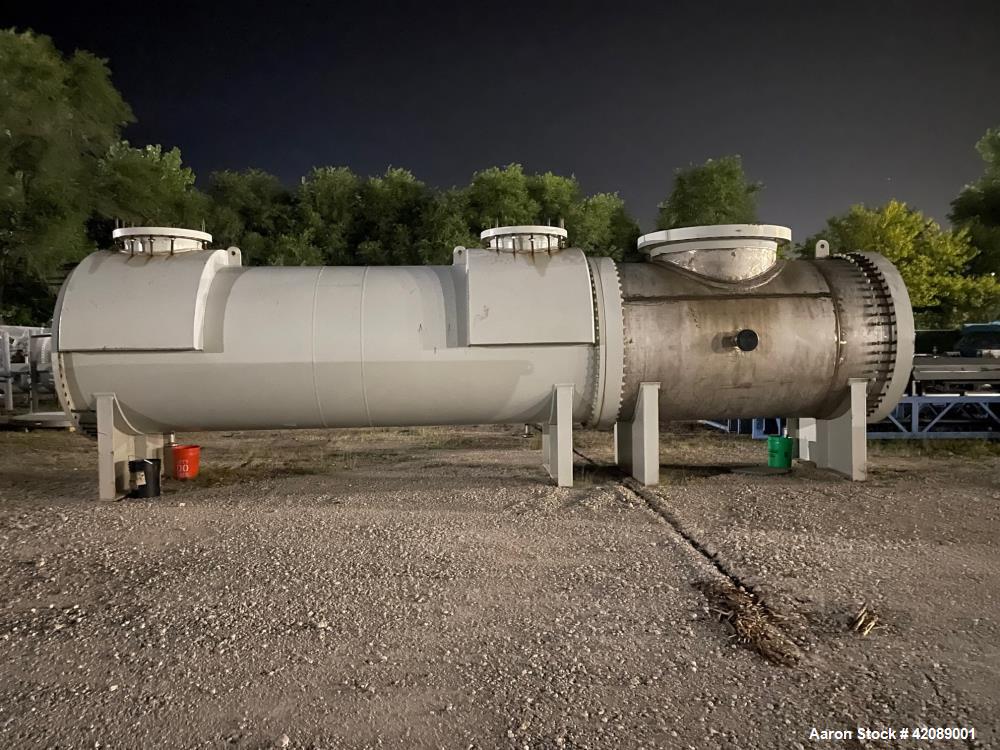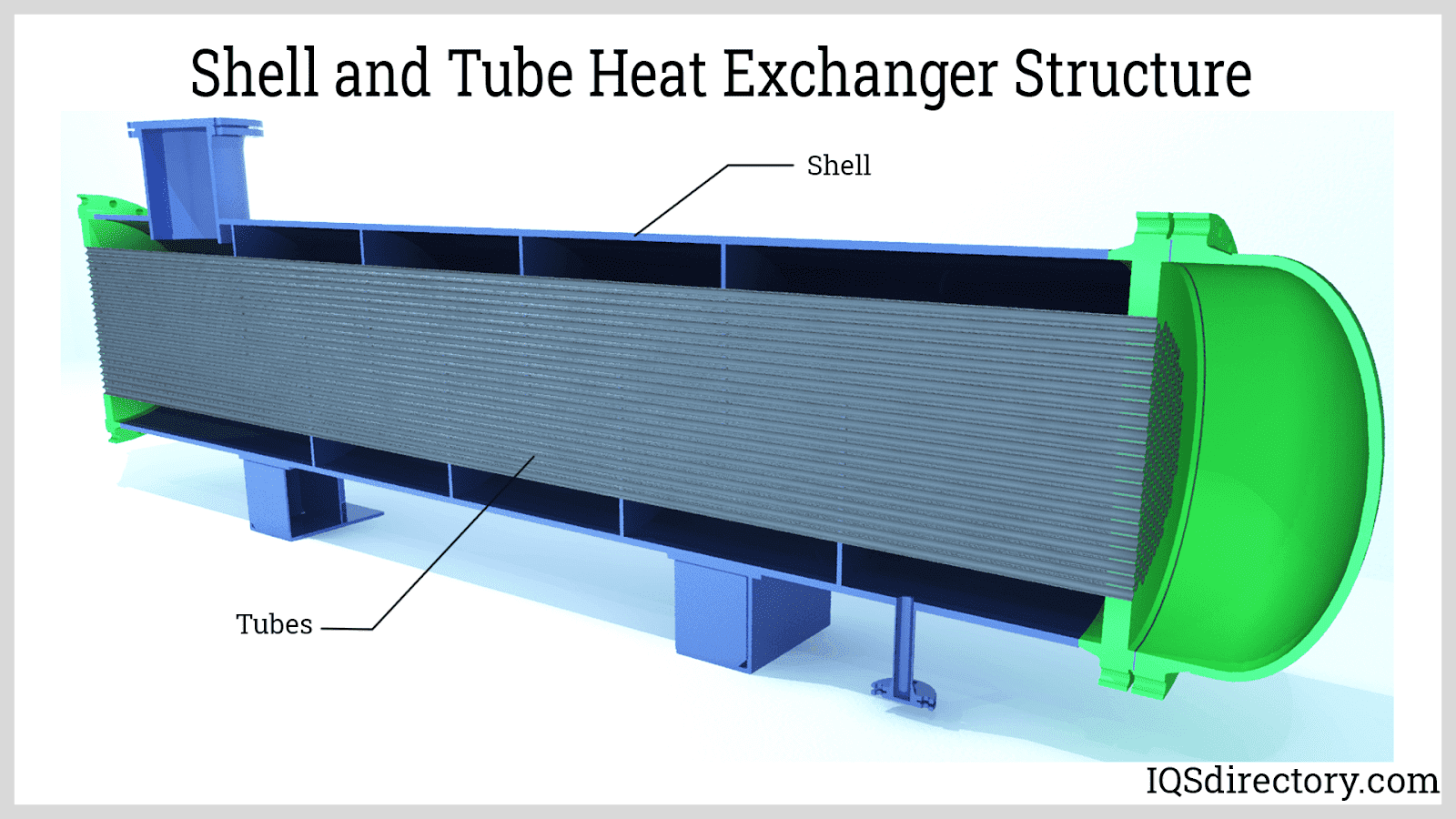How DVS Heat Transfer Systems Use Nanotechnology to Outperform Traditional Cooling Systems
Wiki Article
The Function of Heat Transfer Equipments in Sustainable Power Solutions for the Future
Heat transfer systems are necessary in the mission for sustainable energy services. They enhance thermal energy monitoring, improving the effectiveness of renewable modern technologies. By using devices like conduction, convection, and radiation, these systems lessen energy losses. Their role in solar thermal and geothermal applications is especially considerable. As advancements emerge, the potential for more innovations increases important questions regarding future power techniques. What growths will form the landscape of lasting energy?Recognizing Heat Transfer Systems

The Importance of Thermal Power Monitoring
Efficient thermal power monitoring is necessary for taking full advantage of power efficiency and decreasing waste in various systems. By managing temperature and optimizing Heat transfer procedures, companies can substantially reduce power intake and functional costs. Efficient monitoring entails the implementation of advanced technologies and techniques that keep an eye on and regulate thermal problems within systems, guaranteeing that energy resources are made use of successfully. On top of that, appropriate thermal power monitoring adds to reducing greenhouse gas exhausts, aligning with worldwide sustainability goals. It additionally enhances system dependability and performance, resulting in boosted product quality and longer tools life-span. Ultimately, focusing on thermal energy monitoring is a crucial action in the direction of creating a lot more sustainable power solutions and promoting a liable method to energy usage in property and industrial contexts.Applications of Heat Transfer in Renewable Energy
While various renewable power sources promise sustainability, the efficient application of Heat transfer plays an important function in their efficiency. In wind energy systems, Heat transfer is utilized for generator element air conditioning, improving performance and long life. Geothermal energy relies upon effective Heat exchange in between the planet's subsurface and the liquid flowing in the system, taking full advantage of energy removal. Biomass power procedures likewise gain from Heat transfer, as it assists in transforming organic products into usable gas via pyrolysis and gasification. Furthermore, in hydropower, preserving optimal temperature levels in storage tanks can enhance power outcome. Each of these applications shows the crucial significance of Heat transfer systems in boosting renewable resource modern technologies, eventually adding to a much more lasting energy future.Enhancing Solar Thermal Power Efficiency
As solar thermal power systems remain to develop, boosting their effectiveness has come to be crucial for maximizing power outcome. Advancements in Heat transfer modern technologies, such as boosted thermal storage products and cutting-edge Heat exchangers, play a substantial role in improving efficiency. By utilizing innovative products that have remarkable thermal conductivity, systems can capture and transfer Heat extra successfully. In addition, integrating radar that follow the sun's course guarantees that collection agencies receive optimal solar exposure throughout the day. Using nanotechnology in solar absorbers can further enhance power absorption rates. Incorporating automatic control systems helps take care of and control temperatures power circulation effectively, leading to minimized losses and improved total system effectiveness. These enhancements lead the way for even more lasting solar thermal power remedies in the future.Geothermal Home Heating: A Lasting Solution
Geothermal home heating offers a sensible alternative for lasting power, using substantial ecological advantages via lowered greenhouse gas emissions. Its effectiveness and cost-effectiveness make it an eye-catching choice to typical heating unit. However, difficulties associated with application has to be dealt with to maximize its potential influence.Environmental Advantages of Geothermal
Conventional home heating methods contribute significantly to greenhouse gas exhausts, geothermal heating provides an engaging choice that decreases ecological influence. By using the Planet's inner Heat, geothermal systems use a renewable resource source, considerably minimizing reliance on fossil fuels. This approach creates minimal carbon discharges, making it a cleaner alternative for industrial and property home heating. Additionally, geothermal systems promote power performance, as they require less energy contrasted to traditional heating you can try this out unit. DVS Heat Transfer Systems. The use of geothermal power likewise aids in lowering air contamination, improving local air top quality and public wellness. As a lasting service, geothermal heating sustains climate change reduction efforts, placing itself as a vital part in the shift in the direction of a greener futurePerformance and Cost-Effectiveness
How does geothermal heating measure up in terms of effectiveness and cost-effectiveness compared to traditional heating systems? Geothermal heating shows superior efficiency, often accomplishing a coefficient of performance (COP) of 3 to 5, meaning it produces 3 to 5 units of Heat i thought about this for every single device of electrical energy taken in. This efficiency equates right into lower operating expense, especially in areas with steady geothermal resources. First installment prices can be more than conventional systems; however, long-lasting cost savings on power costs and minimized maintenance expenditures can balance out these in advance investments. Furthermore, numerous federal governments incentivize geothermal systems via rebates and tax credit scores, enhancing their cost-effectiveness. On the whole, geothermal heating emerges as a financially practical and lasting choice to more conventional heating remedies.Implementation Challenges and Solutions
Many obstacles can impede the prevalent implementation of geothermal heater, despite their clear benefits as a sustainable power solution. High preliminary setup costs often discourage financiers and property owners, making financing a significant barrier. In addition, the geographical limitations of ideal geothermal websites restrict accessibility in specific areas. Local guidelines and permitting processes can also complicate task growth, resulting in hold-ups. In addition, public awareness and understanding of geothermal systems stay low, hindering acceptance. To address these obstacles, targeted education campaigns can enhance public understanding, while government incentives might ease economic problems. Working together with local authorities to simplify regulations might promote smoother task authorizations, inevitably advertising the fostering of geothermal home heating as a viable, sustainable power choice.Developments in Heat Transfer Technologies
Developments in Heat transfer innovations play a crucial role in improving power efficiency and sustainability. Advanced Heat exchangers and stage modification materials are at the leading edge of these advancements, providing significant improvements in thermal monitoring. These innovations not only optimize power usage but also add to minimizing environmental effect in different applications.Advanced Heat Exchangers
Advanced Heat exchangers play an essential role in enhancing energy performance throughout numerous applications in sustainable energy solutions. These tools promote the transfer of Heat in between 2 or even more liquids, markedly lowering energy consumption over here in procedures such as commercial heating, cooling, and power generation. Developments in materials and style, such as using nanofluids and portable configurations, have led to enhanced thermal performance and minimized dimension demands. In addition, developments in electronic tracking and control systems enable optimized procedure, additional increasing performance. By reducing waste Heat and optimizing energy healing, advanced Heat exchangers add to reduce carbon impacts and support the shift towards eco-friendly modern technologies. Their continued growth is important for achieving global energy sustainability objectives.
Stage Change Products
The assimilation of stage adjustment materials (PCMs) into Heat transfer modern technologies represents a considerable advancement in energy administration and effectiveness. PCMs absorb and release thermal energy throughout their stage adjustments, making it possible for reliable temperature law in structure materials and energy systems. By saving excess Heat during height periods and releasing it when demand boosts, PCMs add to load shifting and energy conservation - DVS Heat Transfer Systems. This ability enhances the efficiency of renewable energy systems, specifically in solar thermal applications. Furthermore, PCMs can enhance the thermal convenience of interior environments, lowering dependence on traditional heating and cooling down techniques. As developments in PCM formulations continue to emerge, their role in lasting power options is positioned to grow, offering appealing opportunities for future research study and application
Future Prospects for Heat Transfer in Lasting Energy
As the demand for lasting power solutions remains to climb, the duty of Heat transfer systems is coming to be increasingly important fit future innovations. Innovations in designs and products are expected to improve performance in Heat transfer, decreasing energy losses in various applications. The combination of advanced thermal storage systems, such as phase change materials and thermochemical storage, will make it possible for much better management of energy sources. Research into nanofluids and biomimetic Heat exchangers might further optimize thermal efficiency. The fostering of clever technologies will allow for real-time monitoring and adaptive control of Heat transfer procedures. These innovations are positioned to considerably add to the general efficiency and sustainability of energy systems, leading the way for an extra energy-efficient future.Often Asked Concerns
How Can People Apply Heat Transfer Solution at Home?

People can execute Heat transfer systems at home by mounting energy-efficient appliances, making use of radiant home heating, and enhancing insulation. These actions improve power performance, minimize costs, and promote sustainable practices in household environments.

What Are the Prices Connected With Setting Up Heat Transfer Solutions?
The prices related to mounting Heat transfer systems differ extensively, generally encompassing equipment, installment labor, and upkeep. Variables such as system type, home dimension, and neighborhood regulations significantly influence the general expenditure included.Exist Government Rewards for Heat Transfer System Installations?
Federal government motivations for Heat transfer system installations differ by region and can include tax obligation discounts, credits, and grants. These monetary benefits intend to motivate adoption, inevitably promoting energy efficiency and reducing ecological effect within communities.Exactly How Do Heat Transfer Equipments Effect Power Costs?
Heat transfer systems especially affect energy expenses by optimizing power efficiency. By boosting the transfer of Heat, these systems decrease energy intake, resulting in reduced utility prices and producing an extra sustainable approach to power administration.What Upkeep Is Required for Heat Transfer Systems?
Maintenance for Heat transfer systems consists of regular evaluations, cleaning of parts, examining fluid levels, making certain appropriate insulation, and changing worn parts. These tasks assist keep efficiency, stop break downs, and extend the system's operational life expectancy.These systems help with the activity of thermal power from one tool to an additional, making it possible for the transfer of Heat for cooling, heating, or energy generation objectives. Geothermal power relies on efficient Heat exchange in between the planet's subsurface and the liquid circulating in the system, maximizing energy extraction. In addition, geothermal systems advertise power performance, as they call for much less power contrasted to standard heating systems. Advanced Heat exchangers play a vital function in improving energy effectiveness across numerous applications in lasting power options. Heat transfer systems notably affect power expenses by optimizing energy performance.
Report this wiki page